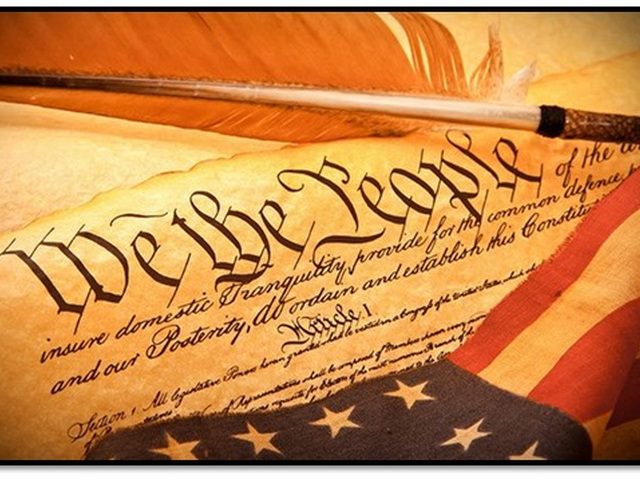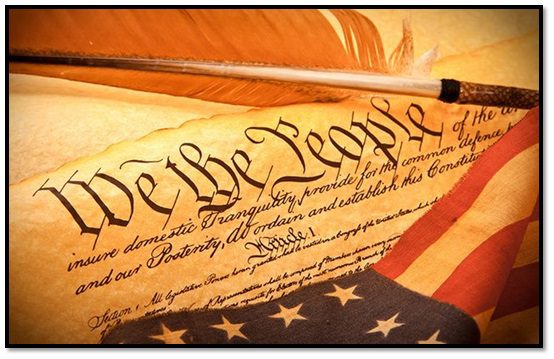This month we celebrate The Declaration of Independence. We celebrate American Independence Day on the Fourth of July every year. We think of July 4, 1776, as a day that represents the Declaration of Independence and the birth of the United States of America as an independent nation. But July 4, 1776 wasn’t the day that the Continental Congress decided to declare independence (they did that on July 2, 1776). It wasn’t the day we started the American Revolution either (that had happened back in April 1775). And it wasn’t the day Thomas Jefferson wrote the first draft of the Declaration of Independence (that was in June 1776). Or the date on which the Declaration was delivered to Great Britain (that didn’t happen until November 1776). Or the date it was signed (that was August 2, 1776).
So what did happen on July 4, 1776? The Continental Congress approved the final wording of the Declaration of Independence on July 4, 1776. They’d been working on it for a couple of days after the draft was submitted on July 2nd and finally agreed on all of the edits and changes. July 4, 1776, became the date that was included on the Declaration of Independence, and the fancy handwritten copy that was signed in August (the copy now displayed at the National Archives in Washington, D.C.) It’s also the date that was printed on the Dunlap Broadsides, the original printed copies of the Declaration that were circulated throughout the new nation. So, when people thought of the Declaration of Independence, July 4, 1776 was the date they remembered. In contrast, we celebrate Constitution Day on September 17th of each year, the anniversary of the date the Constitution was signed, not the anniversary of the date it was approved. If we’d followed this same approach for the Declaration of Independence we’d being celebrating Independence Day on August 2nd of each year, the day the Declaration of Independence was signed!
How did the Fourth of July become a national holiday? For the first 15 or 20 years after the Declaration was written, people didn’t celebrate it much on any date. It was too new and too much else was happening in the young nation. By the 1790s, a time of bitter partisan conflicts, the Declaration had become controversial. One party, the Democratic-Republicans, admired Jefferson and the Declaration. But the other party, the Federalists, thought the Declaration was too French and too anti-British, which went against their current policies. By 1817, John Adams complained in a letter that America seemed uninterested in its past. But that would soon change. After the War of 1812, the Federalist party began to come apart and the new parties of the 1820s and 1830s all considered themselves inheritors of Jefferson and the Democratic-Republicans. Printed copies of the Declaration began to circulate again, all with the date July 4, 1776, listed at the top. The deaths of Thomas Jefferson and John Adams on July 4, 1826, may even have helped to promote the idea of July 4 as an important date to be celebrated. Celebrations of the Fourth of July became more common as the years went on and in 1870, almost a hundred years after the Declaration was written, Congress first declared July 4 to be a national holiday as part of a bill to officially recognize several holidays, including Christmas. Further legislation about national holidays, including July 4, was passed in 1939 and 1941.
I WISH YOU ALL A HAPPY AND SAFE
FOURTH OF JULY HOLIDAY!
CODE ENFORCEMENT AND LIEN AMNESTY PROGRAM
The information listed below is for those with Code Enforcement Liens and the City’s amnesty program.
A) Extension of Code Enforcement Lien Amnesty Program.
The City Commission of the City of West Park hereby authorizes an extension of the Code Enforcement Lien Amnesty Program (“Amnesty Program” or “Program”) for the City. The Program shall be available to eligible property owners who have an outstanding code enforcement lien, regardless of when assessed. Applications for the Program will be accepted through July 31, 2019 and payment of all liens must occur prior to October 31, 2019. Payments received through October 31, 2019 shall be considered a part of the Amnesty Program and under the following conditions:
1. All code enforcement violations on the property shall be in compliance and there shall be no other active code enforcement cases with ongoing violations on the subject property, or on any other properties owned by the property owner within the City.
2. All Unsafe Structures Board Liens and Property Maintenance Liens on any property owned by the property owner within the City shall be paid in full prior to being approved for participation in the Program.
3. Eligible liens must exceed One Thousand Dollars ($1,000.00) and the Lien must not have been under an order of the City’s Special Magistrate that reduced the subject lien.
4. The property owner must submit a Code Enforcement Lien Amnesty Program Application and Participation Agreement for each lien on the property prior to July 31, 2019. A nonrefundable application fee of Fifty Dollars ($50.00) will be charged per property.
B) After verifying that the property owner is eligible for participation in the Program, the City’s Administrator or his/her designee is authorized to approve the application and to administratively reduce the amount required to satisfy the eligible lien(s) to fifteen (15%) percent of the face value of the lien(s), plus the cost of lien preparation and recording. If fifteen (15%) of the face value of the lien is more than fifteen (15%) of the property’s assessed value as determined by the Broward County Property Appraiser, the City Administrator or his/her designee is authorized to administratively reduce the amount required to satisfy the eligible lien(s) to fifteen (15%) percent of property’s assessed value as determined by the Broward County Property Appraiser, plus the cost of lien preparation and recording.
C) If approved for the Program, the property owner shall pay the City of West Park, by a cashier’s check or money order received by the City’s Clerk on or before October 31, 2019, the total sum of the following: (i) the reduced value of the eligible lien(s) on the property; (ii) the unreduced value of any lien under $1,000.00; (iii) the full amount due for any lien that was reduced by Order of the Special Magistrate; and (iv) the cost of lien preparation and recording for each lien. After the property owner has paid the total sum due prior to October 31, 2019, the City shall execute and record a release of the lien.
D) Failure of the property owner to pay the total sum due by October 31, 2019 shall result in the approved lien reduction(s) being null and void, and the property owner shall be liable for the entire face value of the lien(s) as if no reduction had ever been imposed.
E) Property owners who are accepted into the Program are not eligible to have approved matters reviewed by the Code Enforcement Special Magistrate at a later date.
HAVE A GREAT SUMMER—GOD BLESS YOU ALL AND GOD BLESS THE UNITED STATES OF AMERICA.









